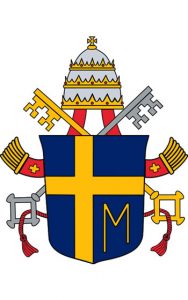Mary for Today: Mary, Model of Faith
Introduction: Is the Mary we are presenting in our Education programmes today the model of the faith we need so badly today? Is it in accord with the signs of the times? I was recently asked to put together a reflection on Mary and Feminism. I turned to the United States bishops’ document on Partners in Ministry, a document released as a response to women’s concerns for church and society. “Mary stands as a model for all Christians of what it means to be a partner with God in the work of salvation” even as she “is a special symbol for women” (#239-40). Two issues are raised – the meaning of Mary in our lives as Christians today as a model of faith for all Christians and how is she a special model for women? Partnership in both church and society are underlying concerns that the feminist movement raises.
The Cautions of the Past: There is a troubling image in presenting Mary as a model of passivity and submission to male authority, a woman valued chiefly for her virginity and maternity, a woman confined to domestic and family roles. To this we can add exaltation because of her special privileges to a level of being beyond imitation by ordinary women. Devotion to Mary can become empty of moral significance for women today who are struggling to realise their full personhood. Proliferation of Marian devotions can even seem to make Mary assume equal importance with Jesus, especially when they are attached to the Eucharist and other sacraments.
The scriptural sources contain less information about the historical Mary than they do about the historical Jesus. What the scriptures record is theological reflection by early church communities after the resurrection. Mary as a symbolic figure begins in the infancy narratives and John’s Gospel.
Troubling also is the question of Marian apparitions, notably between 1850 to 1950, the Marian age. Many of them raised great fears and hopes, attracting many pilgrims. Yet they failed to stress Mary’s active cooperation in the redemptive work of Christ; nor did they stress the message of social transformation or the ending of oppression. Often they pointed backwards rather than forwards, defensive of a pre-Vatican II faith. How can this peasant yet queen, simple Jewish girl, stately wisdom figure, happy young mother, anguished and grieving widow, liberated leader and woman of courage be a model of faith and important religious symbol for Christianity today?
Recent Feminist Discussion: Mary has been looked at with new eyes as one of the comparatively few but surely the most important of female figures in our religious history. Both theological as well as feminist criticism is important in reflecting on Mary today. An important but neglected area of the Scriptures is its Wisdom literature. Mary came to embody all the characteristics of the biblical figure of Wisdom over the course of history. One of its greatest symbols is the ‘tree of life’ that Wisdom is proclaimed as in Proverbs 3:18. By the end of that book she is the valiant woman who takes care not only of her own household but also of the poor and needy.
With the coming Year of Mercy we need to leave behind a God represented in the image of male, stern judge, warrior, omnipotent ruler, king, tyrant, demanding father. What happened when such images prevailed was that characteristics such as the tenderness, mercy, strength, and compassion of the God of the Bible were displaced by popular devotion onto the figure of Mary. Clearly then, God transcends such male and female models and metaphors and language for God must become more inclusive and various, even to seeing God as source of the finest characteristics of both sexes.
Mary as Model of Faith: A Mary for today sees her as a human figure, maturing in her journey, growing in faith, moving from uncertainty to belief in the struggles of her life. “Journey of faith” was a term used frequently by Pope St John Paul II in referring
to Mary’s life and her place in the pilgrim church. He meant Mary’s own historical movement to faith as well as her place in our lives as Christians. Our own Christian life journey has a past, present, and future. Mary is at once a little-known historical person who walked the journey to faith in Christ, and the figure of the church on its Spirit-filled pilgrim journey in time. She was a very human person who experienced the doubts and insecurity of historical life, and came to faith in the power of Jesus’ life, death, and resurrection. She, like the other disciples, received the Holy Spirit and became part of the first Christian community, the first church. While faith is God’s gift, there is an action of active obedience in the receptivity of Christian faith.
Much of the Christian tradition about women, notably in Augustine and Aquinas, was built on an Aristotelian biology that is simply outmoded. Traditional distinctions such as ‘active’ and ‘passive’, ‘head’ and ‘heart’, are harmful. Justice and Christian truth demand equality, mutuality, and reciprocity. We can no longer see Mary as purely a passive human figure; her receptivity to grace must be seen as fully active. While the story of her acceptance at the Annunciation in Luke is theological reflection imagined backward to create a scene when Mary said her fiat to God’s request, it is also Mary’s active receptivity to grace in the course of her whole life. Her past, present, and future coalesce into one moment that has been importantly provocative for Christian imagination across the centuries.
Christianity, like Mary herself, is not the monopoly of scholars, exegetes, theologians, or institutional authorities. She has taken on a myriad of guises in her relation to Christ and church. An important task today is to integrate her into the social teaching of the church. The Magnificat contains much that is liberationist and provocative. Apparitions are to be judged by their inspiration into deeper faith and consistent social action. Pope Francis finished his great exhortation, Evangelii Gaudium, with a prayer to Mary, calling her ‘star of a new evangelisation’ and ‘mother of the living Gospel.’ I await how she will appear in his encyclical on the environment. As a mysterious figure of autonomy and relationship she can speak of the interrelationship of all creation for there is ‘the Mary in all of us.’
Reference: Carr, Anne. Mary Woman of Nazareth, Paulist Press. 1989.


 Entries(RSS)
Entries(RSS)